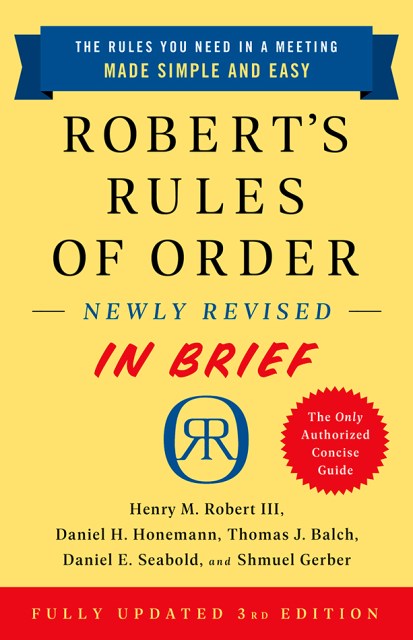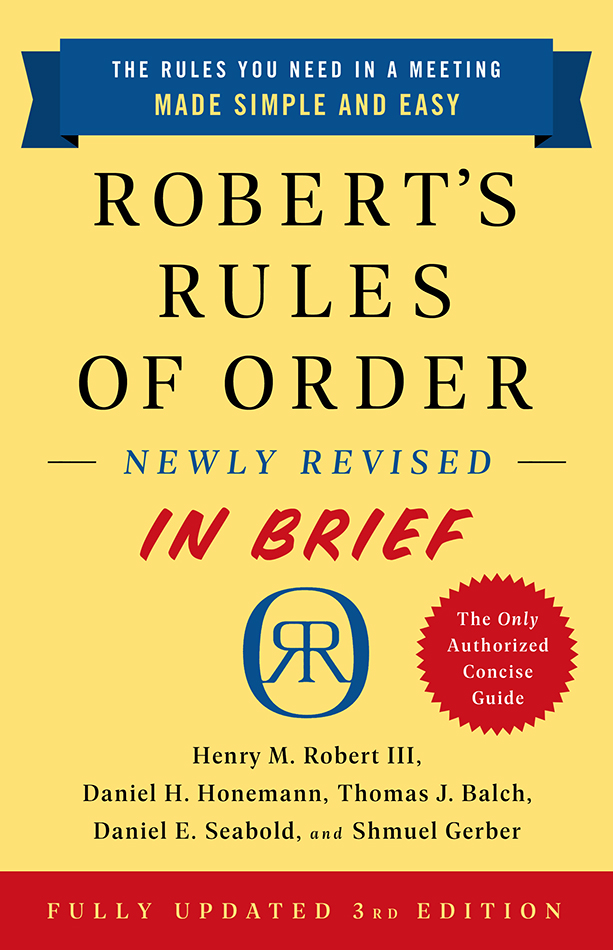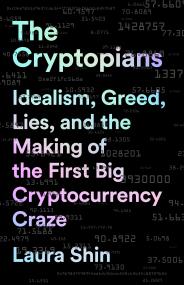Promotion
Use code MOM24 for 20% off site wide + free shipping over $45
Robert's Rules of Order Newly Revised In Brief, 3rd edition
Contributors
By Daniel H. Honemann
By Thomas J. Balch
By Daniel E. Seabold
By Shmuel Gerber
Formats and Prices
Price
$11.99Price
$15.99 CADFormat
Format:
- ebook (Revised) $11.99 $15.99 CAD
- Audiobook Download $18.99
- Trade Paperback (Revised) $11.99 $15.99 CAD
This item is a preorder. Your payment method will be charged immediately, and the product is expected to ship on or around September 1, 2020. This date is subject to change due to shipping delays beyond our control.
Also available from:
Originally published in 1876, General Henry M. Robert’s guide to smooth, orderly, and fairly conducted meetings has sold over six million copies in eleven editions. Robert’s Rules of Order is the book on parliamentary proceedings, yet those not well versed on what has now become a rather thick document can find themselves lost-and delayed-while trying to locate the most important rules. The solution? Robert’s Rules of Order Newly Revised in Brief.
Written by the same authorship team behind the officially sanctioned Robert’s Rules of Order, this short and user-friendly edition takes readers through the rules most often needed at meetings–from debates to amendments to nominations. With sample dialogues and a guide to using the complete edition, Robert’s Rules of Order Newly Revised in Brief is the essential handbook for parliamentary proceedings.
Genre:
- On Sale
- Sep 1, 2020
- Page Count
- 224 pages
- Publisher
- PublicAffairs
- ISBN-13
- 9781541751125
Newsletter Signup
By clicking ‘Sign Up,’ I acknowledge that I have read and agree to Hachette Book Group’s Privacy Policy and Terms of Use







